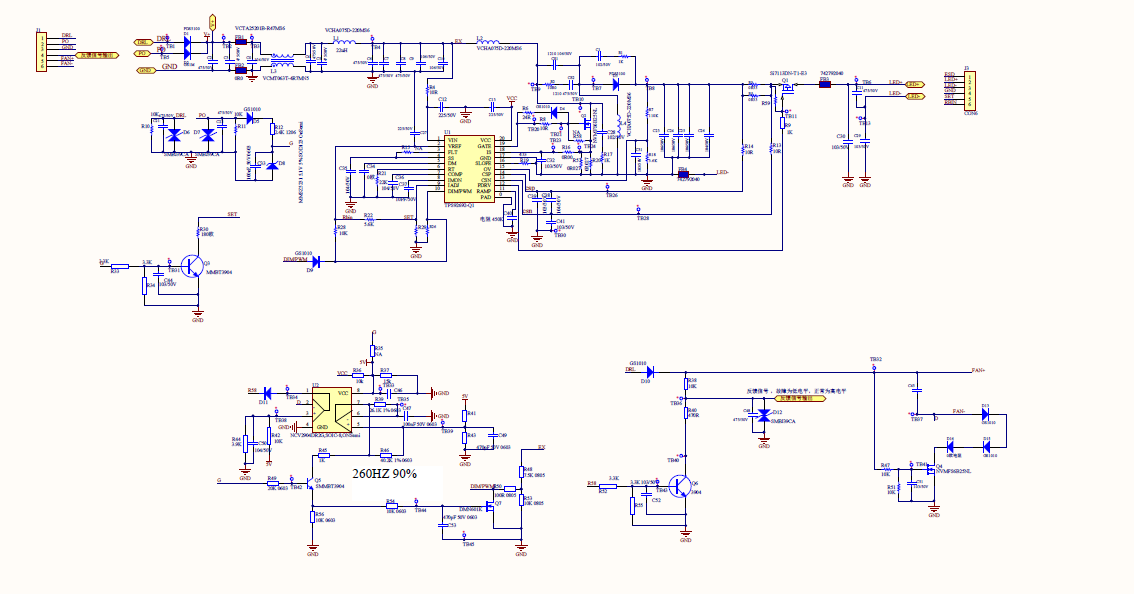would you help check the SCH and give some advices about the below isue
1,Spec: INPUT:6-24V ;OUTPUT:18-26V/1A(7S*LED)
2, Question: There is a visible abnormal noise on the PCBA when PWM dimming input with the duty is 8%( Current: 80ma),The frequency of PWN is about 200hz. After testing, we had eliminated the problem of inductive abnormality, and we had tried to remove the coupling ceramic capacitance directly from the output terminal and inductance. The visible abnormal noise is still there.
3, SCH is as below.


